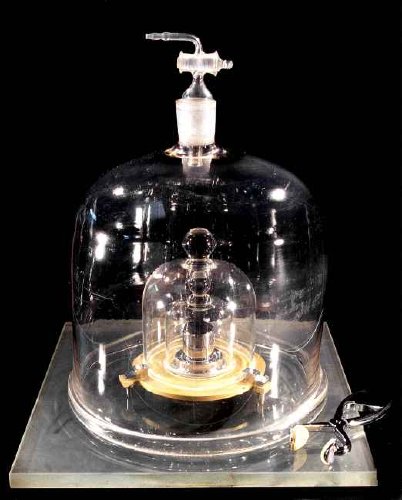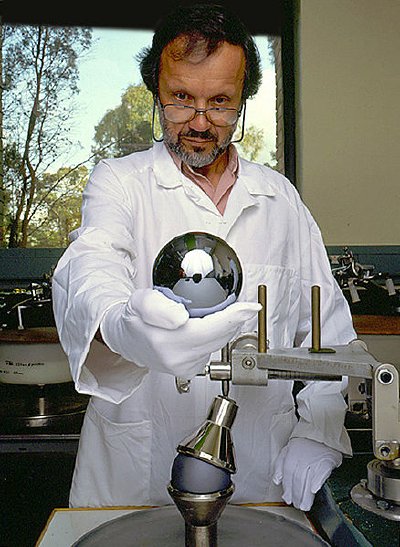aeacfm
Hazard to Others
  
Posts: 129
Registered: 24-7-2010
Member Is Offline
Mood: chem
|
|
ppm , kppm
is it reight chemically to represent concentration by kppm ? example :
120,000 ppm =======> 120 kppm
as it is conventional unit lik others
|
|
|
redox
Hazard to Others
  
Posts: 268
Registered: 22-2-2011
Location: The Land of Milk and Honey
Member Is Offline
Mood: Chalcogenetic
|
|
Well, it does make sense, if one looks at it as "thousand parts per million," but it seems much clearer to say "parts per thousand," ppt,
instead.
120,000 ppm = 120 ppt = 120 kppm
My quite small but growing Youtube Channel: http://www.youtube.com/user/RealChemLabs
Newest video: Synthesis of Chloroform
The difference between chemists and chemical engineers: Chemists use test tubes, chemical engineers use buckets. |
|
|
aeacfm
Hazard to Others
  
Posts: 129
Registered: 24-7-2010
Member Is Offline
Mood: chem
|
|
i know i makes sense , but i mean chemically ?????
|
|
|
Ozone
International Hazard
    
Posts: 1269
Registered: 28-7-2005
Location: Good Olde USA
Member Is Offline
Mood: Integrated
|
|
One should be careful using "ppt". This is usually reserved for "parts-per-trillion" (e.g. 1 ng/g (or mL)).
FWIW, I would call 120,000 ppm 12 g/100g (or dL, or %)...or, perhaps, 120 g/kg (or L).
Cheers,
O3
-Anyone who never made a mistake never tried anything new.
--Albert Einstein
|
|
|
peach
Bon Vivant
    
Posts: 1428
Registered: 14-11-2008
Member Is Offline
Mood: No Mood
|
|
| Quote: | One part per hundred is generally represented by the percent (%) symbol and denotes one part per 100 parts, one part in 102, and a value of 1 ×
10−2. This is equivalent to one drop of water diluted into 5 milliliters (one spoon-full), or about fifteen minutes out of one day.
One part per thousand should generally spelled out in full and not as “ppt” (which is usually understood to represent “parts per
trillion”). It may also be denoted by the permille (‰) symbol. Note however, that specific disciplines such as the analysis of ocean water salt
concentration and educational exercises occasionally use the “ppt” abbreviation. “One part per thousand” denotes one part per 1000 parts, one
part in 103, and a value of 1 × 10−3. This is equivalent to one drop of water diluted into 50 milliliters (ten spoon-fulls), or about one and a
half minutes out of one day.
One part per ten thousand is denoted by the permyriad ‱ symbol. It is used almost exclusively in finance, where it is known as the basis
point and is typically used to denote fractional changes in percentages. For instance, a change in an interest rate from 5.15% to 5.35% would be
denoted as a change of 20 basis points or 20 ‱. Although rarely used in science (ppm is typically used instead), one permyriad has an
unambiguous value of one part per 10,000 parts, one part in 104, and a value of 1 × 10−4. This is equivalent to one drop of water diluted into
half a liter, or about nine seconds out of one day.
One part per million (ppm) denotes one part per 1,000,000 parts, one part in 106, and a value of 1 × 10−6. This is equivalent to one drop
of water diluted into 50 liters (roughly the fuel tank capacity of a compact car), or about thirty seconds out of a year.
One part per billion (ppb) denotes one part per 1,000,000,000 parts, one part in 109, and a value of 1 × 10−9. This is equivalent to one
drop of water diluted into 250 chemical drums (50 m3), or about three seconds out of a century.
One part per trillion (ppt) denotes one part per 1,000,000,000,000 parts, one part in 1012, and a value of 1 × 10−12. This is equivalent to
one drop of water diluted into 20 Olympic-size swimming pools (50,000 m3), or about three seconds out of every hundred thousand years.
One part per quadrillion (ppq) denotes one part per 1,000,000,000,000,000 parts, one part in 1015, and a value of 1 × 10−15. This is
equivalent to 1 drop of water diluted into a cube of water measuring approximately 368 meters on a side (fifty million cubic meters, which is a cube
about as tall as the Empire State Building's 102 stories), or two and a half minutes out of the age of the Earth (4.5 billion years). Although
relatively uncommon in analytic chemistry, measurements at the ppq level are performed.[4] |
| Quote: | | Although the International Bureau of Weights and Measures (an international standards organization known also by its French-language initials BIPM)
recognizes the use of parts-per notation, it is not formally part of the International System of Units (SI).[2] Note, that although “percent” (%)
is not formally part of the SI, both the BIPM and the ISO, take the position that “in mathematical expressions, the internationally recognized
symbol % (percent) may be used with the SI to represent the number 0.01” for dimensionless quantities.[2][5] According to IUPAP, “a continued
source of annoyance to unit purists has been the continued use of percent, ppm, ppb, and ppt.”[6]. Although SI-compliant expressions should be used
as an alternative, the parts-per notation remains nevertheless widely used in technical disciplines. |
| Quote: | | Although "ppt” usually means "parts per trillion", it occasionally means “parts per thousand”. Unless the meaning of "ppt" is defined
explicitly, it has to be guessed from the context. |
[Edited on 25-7-2011 by peach]
|
|
|
aeacfm
Hazard to Others
  
Posts: 129
Registered: 24-7-2010
Member Is Offline
Mood: chem
|
|
guys, i mean kppm is this chemically right ? not ppt , ppb , .......
|
|
|
unionised
International Hazard
    
Posts: 5105
Registered: 1-11-2003
Location: UK
Member Is Offline
Mood: No Mood
|
|
Put it this way, If I was refereeing a paper that talked about kppm, I'd tell them to change it to something more conventional like 12%.
How about this?
120 ‰
http://en.wikipedia.org/wiki/Per_mil
|
|
|
aeacfm
Hazard to Others
  
Posts: 129
Registered: 24-7-2010
Member Is Offline
Mood: chem
|
|
thats what i mean writing and reporting chemically not any other thing
i mean % , ppm chemically right but kppm i think it makes sense but not chemically
|
|
|
Arthur Dent
National Hazard
   
Posts: 553
Registered: 22-10-2010
Member Is Offline
Mood: entropic
|
|
Wouldn't ppk be acceptable? ppm being parts per million, the abbreviation "k" has always stood for kilo, or thousand, in physics as well as in
chemistry...
Robert
--- Art is making something out of nothing and selling it. - Frank Zappa ---
|
|
|
peach
Bon Vivant
    
Posts: 1428
Registered: 14-11-2008
Member Is Offline
Mood: No Mood
|
|
Just write PP thou. I've seen that used before, but never ppkm.
Or write it in PPM and times the number by a thousand.
So instead of 1ppkm, use 1000 ppm if you must stick to parts per.
This is like micro and mu, (greek u).
Electronics guys, and even some scientists, insist (for some weird reason) on writing it as mF (farads) or mg (grams). So it reads, milli Farads and
milligrams to most other people. In the first example, it can be quite obvious it's wrong in a circuit when it's being built by someone who's seen
lots of other versions of similar circuits and knows what the rough value should be. In the worst case (it's being built by someone who hasn't seen
those other examples), the circuit burns out.
In the latter example, that will mean nurses (who are not pharmaceutical companies or doctors) end up injecting patients with a thousand times too
much dRugZ, killing them.
To this end, doctors started specifically noting it as mic, micrograms, so there'd be zero confusion between mg & ug in terms of peoples
handwriting or messed up ideas on using m to represent micro.
The term 'chemically right' doesn't make much sense. A measurement system 'just for' chemistry is a shite measurement system as, if anything, the
sciences rely more and more on each other and disciplines as they advance. It's mathematically / logically correct, as 1 ppktmb would also represent a
number. But the people reading it will spend half an hour trying to work out what you're talking about.
If it's less than ppm, you'll use about as many characters just writing the number it's self, like 0.01. For instance, if your reaction yields 3g of
gunk for 10 going in, do you write that as parts per or just 3g, or 30%? If you wrote that as parts per, it'd read like archaic alchemy; and I don't
think even the alchemists bothered with that.
If it's scientific notation you're after, use 10^.
The parts per million, billion, trillion was used to avoid writing endless zeros in trace analysis. That's it. Not because it makes any more
scientific or mathematic sense. It was superseded by the 10^ notation but persists through carry over. Physics is all over the 10^ due to the values
their talking about being all over the place; eighteen zeros to the left, then to the right. Chemists are even onto it with the logarithmic pH scale,
but call it 'pH' rather than using the mathematical notation. Again, carry over.
I can promise you, if the International Bureau is bothered about parts per, there is a significant  reason for it. All they do is sit around thinking about units, reasoning and
perfection. reason for it. All they do is sit around thinking about units, reasoning and
perfection.
I get the feeling you are interested in the precision and meaning of units and measurement. That is a seemingly simple but noble mind at work, as they
define so much. If so, begin reading and following all the links from the articles 'imperial', 'metric', 'si' and 'ipk' on wiki (including all the
stuff about grains, drams, long and short). It is harder than the majority think to pin down a unit.
My advice to anyone under their degree age of science is to go for SI. It will make things so much easier for you and 'makes sense' in terms of the
units and notation. It is also the international standard. The International Bureau is dedicated to making units and notations make sense.

THE kilo. A block of platinum / iridium alloy that defines every metric mass on Earth; made in London and stored in a vault in
France. The IPK has been on a diet, and seems to be loosing micrograms, meaning every other balance on Earth is also dieting; revealing the issues
with this method. As all kilos, grams, micrograms and so on are defined by this block, by international law, this block is always correct. Meaning
every balance on Earth is drifting with the block. NOT a good standard.

A nerd at work for the Bureau's cause. They're trying to make a perfect sphere of silicon. Silicon because the semiconductor industry knows how to
make it ultra pure and mono-crystalline. They can measure the dimensions very accurately by interferometry and then work out the density by x-ray
diffraction. This sphere is almost atomically perfect, and rounder than a neutron star. But this is still a 'physical artefact'.

The 'Watt balance'. These nerds are attempting to produce a kilo based on a constant; currents and fields.

The International Prototype Metre, also made of platinum / iridium alloy, lying beside the IPK.

This has already been replaced with a constant, the distance light travels in a vacuum in a set time. Because time can be measured to an extremely
accurate value by a nuclear decay constant.

The NIST-F1 caesium fountain clock. Accurate to better than one second in 60 million years. + Nerds.

[Edited on 26-7-2011 by peach]
|
|
|
|